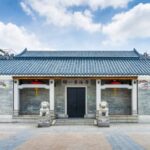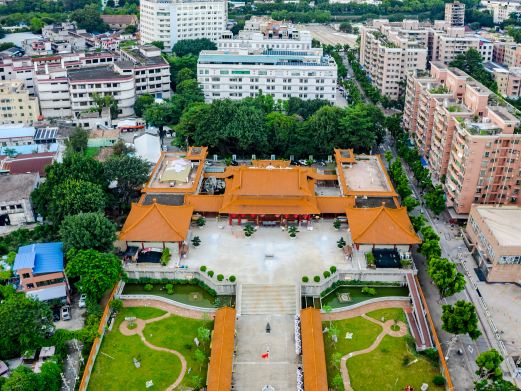Huitong Village is located in the southwest of Tangjia Bay Town, Zhuhai City. The village features a uniform architectural style of Lingnan residential buildings, with each house adorned with gray tiles, blue bricks, and upturned eaves. The buildings are neatly arranged, maintaining a consistent exterior color scheme, and are embedded within orderly homesteads formed by a ‘checkerboard’ grid pattern. In 2006, Huitong Ancient Village was declared a district-level cultural heritage protection unit and is currently applying for the status of a municipal-level cultural heritage protection unit.
The core structure of Huitong Village is commonly referred to as the ‘three streets and eight alleys.’ The ‘three streets’ consist of the ‘Lower Horizontal Street’ which runs north to south along the lotus pond, the ‘Middle Horizontal Street’ which parallels the first and gradually ascends with the mountain terrain, and the ‘Upper Horizontal Street.’ The ‘eight alleys’ are eight stone-paved lanes running east to west. These ‘eight alleys’ connect the three main streets from bottom to top, following the natural slope of the mountain, with the ‘three streets and eight alleys’ intersecting perpendicularly, forming a square and orderly ‘checkerboard’ spatial organization.

The individual residential designs ingeniously incorporate modern modular design techniques. They are centered around the traditional main house and front courtyard, with variations in the addition of left and right studies and front and back courtyards, evolving into residences that cater to various family sizes, generational increases, and the order of respect within the family. This design approach ensures that the entire village maintains a uniform yet varied appearance, rich in rhythm and harmony.

The quality of Huitong Village’s ancestral halls and residential buildings is superior, with extensive use of traditional Chinese wooden beam systems, combining post-and-beam and gable-bearing structures. A local characteristic is the use of carved stone pillars in place of wooden ones to withstand wind, rain, and humidity, with exquisite craftsmanship in the镂空 carving of stone beams, brackets, and brackets. Over 100 years, these features have not lost their charm. Huitong Village is open all year round and accessible 24/7.









